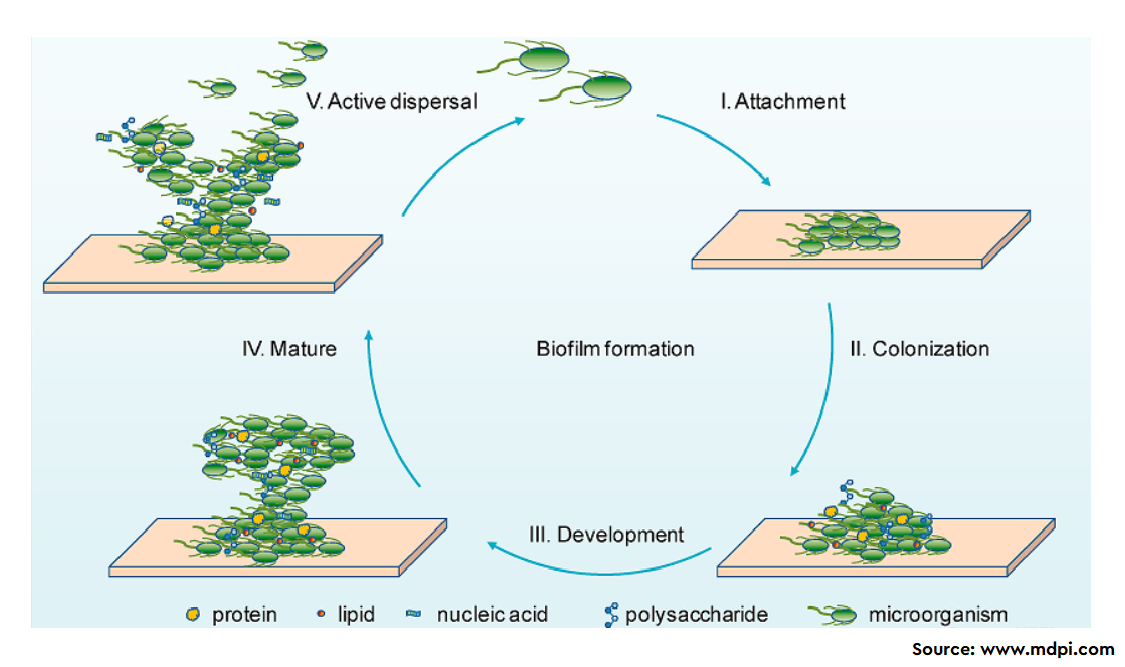For long, Methicillin helped to combat the infections caused by Gram positive Staphylococcus aureus, however with time bacteria became smarter and developed resistance. This led to the development of Methicillin resistant S. aureus (MRSA). This bacterium is responsible for severe morbidity and mortality worldwide and has been listed as a high priority multi-drug resistant (MDR) pathogen by the World Health Organization (WHO) in2017. The pathogen is widespread in hospitals and has also gained resistance towards the existing antibiotics achieving the crown of “superbug”. The prime reason seems to be the ability of MRSA to form biofilms on biotic and abiotic surfaces. Surprisingly, more than 80% of bacterial infections caused by MRSA are biofilm mediated. Recent review by Cascioferro et al. has made attempt to understand the current status of the anti-virulent strategies to deal with MRSA.
The first section of the review highlights in details the phenomenon of biofilm development by the pathogenic strain along with role of currently available antibiotics. The next section emphasizes on the role of oxazolidinones, lactones and quinolones as biofilm inhibitors. Various alternate approaches are being discussed including the use of antibiotics along with dispersal agents. It seems noteworthy that 1-[4-chloro-3-(trifluoromethyl)phenyl]-3-(2,2-difluoro-1,3-benzodioxol-5-yl)urea 18 showed impressive results against biofilm formation by MRSA. However, still there long journey ahead as there are no approved drugs existing till date. In the end review focuses on the use of current knowledge to design the drugs targeting biofilm and thus combating the global problem of MRSA infections.
To learn more, please visit the website of ChemMedChem (Link)







